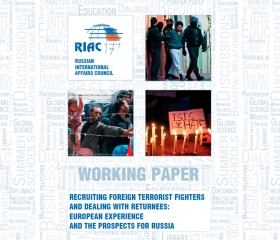Post-Soviet Turkmenistan: A Little-Known Present and an Uncertain Future
People attend the opening ceremony of
a railway link to Afghanistan in the Ymamnazar
customs control point, Turkmenistan,
November 28, 2016
In
Login if you are already registered
(no votes) |
(0 votes) |
Doctor of Political Science, Senior Researcher at the Analytical Centre of Institute of International Studies, MGIMO University
October 27, 2016 marked the 25th anniversary of Turkmenistan’s declaration of independence. During that time, the country experienced significant socioeconomic change, as well as changes in its domestic and foreign policies. One of the most pressing problems today is the threat of religious extremism spreading through Turkmenistan, which could seriously affect security both within the country and in the Central Asian region as a whole.
October 27, 2016 marked the 25th anniversary of Turkmenistan’s declaration of independence. During that time, the country experienced significant socioeconomic change, as well as changes in its domestic and foreign policies. One of the most pressing problems today is the threat of religious extremism spreading through Turkmenistan, which could seriously affect security both within the country and in the Central Asian region as a whole.
A Nation of Tribes
In Soviet times, Turkmenistan was ranked alongside Tajikistan as the most backward republic in the USSR on all key socioeconomic indicators. Turkmenistan has large natural oil and gas reserves, and export is the country’s major source of revenues; the greater part of Turkmenistan is covered by the sands of the Karakum Desert. During the Soviet Union, Turkmenistan relied on the export of natural gas, but this had little effect on the country’s socioeconomic development. The collapse of the USSR created great hope among the people that the sale of hydrocarbons would make the country rich, but these hopes never materialized.
Unlike Tajikistan, Turkmenistan did not have a large number of intellectuals. In addition, the country lacked a unified national identity. In this respect, Turkmenistan is unique even against the background of the remnants of tribalism in other Central Asian states. Turkmenistan is a “nation” of tribes [1]. The key role among them is played by the Tekke tribe from Ahal, which controls the territory around the capital (the first President of the Republic of Turkmenistan Saparmurat Niyazov [1991–2006], and current President Gurbanguly Berdimuhamedow [since 2007], are from the Ahal Tekke tribe), as well as by the Tekke tribe from Mary, the Yomut, the Ersari, etc.
After the collapse of the USSR, Saparmurat Niyazov’s neo-totalitarian regime was installed in Turkmenistan.
Inter-tribal feuds that go back centuries play a very important part in Turkmenistan’s domestic clan and political life [2]. Another feature of Turkmenistan is that after the collapse of the USSR, a neo-totalitarian regime was installed in the country under the influence of its first President Saparmurat Niyazov. Niyazov assumed the title of Turkmenbashi (“the leader of the Turkmens”), was named President for Life and introduced the cult of Ruhnama (The Book of the Soul, which he had written), in which he was worshipped as a prophet. Niyazov’s regime was characterized by mass repression, propaganda of “Ruhnama values” and by the President’s rather eccentric public whims, which gave rise to the fairly popular description of post-Soviet Turkmenistan as a “Stalinist Disneyland” [3].
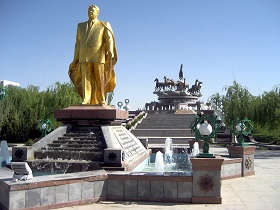
One of the positive achievements of Turkmenbashi’s presidency was that the country was granted the status of a neutral state by the United Nations [4]. However, the credit here should go to Boris Şyhmyradow, who served as Minister of Foreign Affairs of Turkmenistan from 1995 to 2000. He was later persecuted on political grounds in connection with the attempt on President Niyazov’s life in 2002. Whatever the case may be, Turkmenistan’s neutral status contributed to solidifying its national sovereignty.
Current President of Turkmenistan Gurbanguly Berdimuhamedow initiated a “thaw” with respect to the country’s previous leader. However, just like Khrushchev’s “thaw” in the Soviet Union, it has only mitigated the negative characteristics of the country’s current regime, but has not dismantled the regime entirely. The “thaw” was largely superficial. Thus, mass purges ceased, and the cult of personality of the previous president was weakened. But it was replaced almost immediately with the cult of personality of Gurbanguly Berdimuhamedow. Freedoms were expanded somewhat for the country’s citizens; for instance, they were allowed wider use of the internet. The state’s socioeconomic policy became more responsible: hospitals were reopened in provincial towns, and the education system that Turkmenbashi had largely demolished was strengthened.
As for Turkmenistan’s relations with its neighbours, the most significant achievement was the construction of gas pipelines into China, as it reduced its dependence on exporting gas to Russia. However, other projects (in particular, the Turkmenistan–Afghanistan–Pakistan–India [TAPI] Pipeline and the Trans-Caspian Gas Pipeline) were never implemented. Under President Berdimuhamedow, relations with Russia remained virtually unchanged from Turkmenbashi’s time. No appreciable rapprochement took place.
From the point of view of demographics, modern Turkmenistan is a fairly young society that is growing quantitatively.
Turkmen Society: A Socioeconomic Portrait
Unfortunately, the lack of reliable statistics on post-Soviet Turkmenistan makes it very difficult to compile an objective portrait of the country today. Moreover, it prevents reliable forecasts of the country’s development from being made [5]. The country is closed to foreigners (researchers and journalists have a very hard time obtaining a visa) and in this regard, Turkmenistan is comparable to North Korea. All the official information is essentially propaganda. Intelligence from opposition circles that sometimes seeps through should also often be treated as rumours. This places serious limitations on the sources available for conducting research on Turkmenistan.
From the point of view of demographics, contemporary Turkmenistan is a fairly young society that is growing quantitatively.
Table 1. Demographic Characteristics of Turkmenistan
| Country | Median age | Births per 1000 people (2016 estimate) | Deaths per 1,000 people (2016 estimate) |
|---|---|---|---|
| Turkmenistan | 27 | 19.3 | 6.1 |
Table compiled using U.S. Central Intelligence Agency data.
Due to its rich hydrocarbon reserves, Turkmenistan has a high GDP per capita for the region. Therefore, despite high level of structural unemployment and the lack of adequate healthcare and education in villages and provincial towns (under Turkmenbashi, the state spent huge amounts of money on prestige projects, yet all the hospitals outside the capital were closed down, and the education system switched to studying the “holy book,” the Ruhnama), migration abroad was far smaller than in other Central Asian countries. The outflow of migrants is also impeded by the government’s policies, as there are certain restrictions on travelling abroad.
Table 2. The Relationship between Migration Flows and Economic Factors in Turkmenistan
| Country | Migration-related population growth/decline per 1000 people (2012 estimate) | Per capita GDP based on purchasing power parity (dollars) | Unemployment, (unofficial and official estimates) | % of population living below the poverty line, % (estimate) |
|---|---|---|---|---|
| Turkmenistan | -1.9 | 16,400 (2015 estimated) | 11 (2014) | 0.2 (2012) |
Table compiled using U.S. Central Intelligence Agency data.
The role that Russia plays in labour migration and shuttle trading is significantly lower in Turkmenistan than it is in other Central Asian states. Turkey, on the other hand, plays a larger role (due, among other things, to the linguistic proximity of the Turkmen and Turkish languages, which both belong to the same group within the Turkic language family). Additionally, territorial factors increase the roles of Iran and the Persian Gulf countries.
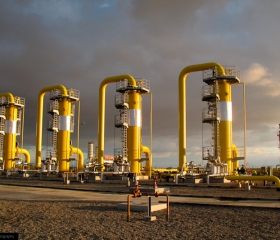
Maria Chepurina, Mathieu Lemoine:
The TAPI project: Turkmenistan’s bet in pipeline
geopolitics
Migration from Turkmenistan also has a number of specific qualitative features. During the Soviet period and up to the collapse of the USSR, the non-Turkmen population – largely concentrated in the capital Ashgabat – played a major role in the cultural and scientific life of the country and ensured the efficient running of government structures and the security forces. Just like in other Central Asian states, many Russians, Ukrainians, Jews and Tatars lived in Turkmenistan at the time. The country was known for having a large Armenian population. Before the Revolution of 1917, Turkmenistan was a separate Trans-Caspian Region of Russian Turkestan. It was closely tied to the South Caucasus and served as the preferred destination for the masses of Armenians migrating from what today is Azerbaijan. Prior to the devastating earthquake of 1948, Ashgabat was even considered an Armenian city. All aspects of the society’s life bore the heavy consequences of the mass exodus of the non-Turkmen population (to Russia, Western countries and Israel), which was accelerated due to Turkmenistan’s unilateral cancellation of dual citizenship with Russia in the wake of the 2002 attempt on Turkmenbashi’s life.
The situation was further exacerbated by the fact that the Turkmen national intelligentsia had traditionally been smaller in numbers than in other Central Asian states. Turkmenbashi carried out mass purges aimed mostly against the highly educated Turkmen officials and intelligentsia and, as a result, this cultural stratum also experienced mass emigration. The situation in healthcare and education started to improve gradually under the country’s second President Gurbanguly Berdimuhamedow through the abandonment of the previous regime’s most odious measures (Ruhnamanization, for instance,) and an increase in financing [6]. Yet unofficial estimates suggest that these improvements cannot radically change the situation.
There is a problem with obtaining reliable statistics on contemporary Turkmenistan.
When analysing Turkmenistan’s socioeconomic situation, it is necessary to take into account the trends of the last two years, which have not yet been fully addressed by international statistics. These trends include the negative economic influence of falling prices for oil and gas, the debt crisis in the relations with China as the principal gas buyer (now gas is mostly supplied as payments for previously received loans), and the food crisis.
On the whole, research paints a picture of a developing society with a relatively young but uneducated population that is experiencing high unemployment levels, and which is living off revenues from the sale of hydrocarbons.
Security and Religion: The Growing Threat of Islamic Extremism
Currently, Turkmenistan is among the post-Soviet countries that is experiencing a sharp escalation in religious extremism. This problem is linked to several factors: 1) in 2014–2015, forces linked with ISIS appeared on the border between Turkmenistan and Afghanistan, which is populated by Turkmen tribes; and 2) Salafi propaganda is on the rise in Turkmenistan. Unfortunately, due to the country’s insular nature, the international community has no reliable information on the situation inside Turkmenistan.
Until around 2013–2014, Turkmenistan was more or less free from religious extremist groups and their emissaries. Virtually all the emissaries of the Hizb ut-Tahrir organization in Turkmenistan failed, because the population was essentially unresponsive to their propaganda efforts, and there was often no demand for the literature they smuggled into the country. It was only in 2014–2015, when matters on the border between Turkmenistan and Afghanistan deteriorated, that the situation changed. The media ran news reports on the sharp increase in religious extremism in Turkmenistan. At the same time, religiosity on the whole is on the rise. And this is true for the younger generation as well. This much is evident from the number of people who attend mosques on religious holidays in places where mosques did not even exist previously (for instance, in Ashgabat).
The situation on the border between Turkmenistan and Afghanistan deteriorated significantly in late April 2015. There are many descendants of the Basmachi who fought against the Soviet forces among the Turkmens living in the Afghan borderlands. The Turkmen population in those Afghan regions have traditionally been strong supporters of the Taliban. However, over the past year or so, a large number of them have unexpectedly switched their allegiance to ISIS (some expert data state that it was due to major financial infusions from abroad, possibly from Qatar, with the purpose of blocking the construction of the TAPI pipeline.)
The economic and debt crises could, among other things, also trigger instability and the rise of extremism.
As for the Armed Forces of Turkmenistan, despite the reforms currently being introduced by the authorities, the real state of affairs is still unsatisfactory, and it is doubtful that the military is capable of responding effectively to emerging threats. This much was obvious with the escalation on the border between Turkmenistan and Afghanistan. There is a palpable atmosphere in the country that the authorities are preparing for war and mobilizing their forces. More stringent conditions for national military service are being introduced.
At the same time, Turkmenistan is careful to maintain its neutral status. To this end, the government of Turkmenistan has officially denied the existence of a threat on the border with Afghanistan. It even sent an official note to that effect to Kazakhstan after President Nursultan Nazarbayev made a statement voicing certain concerns that he and Vladimir Putin have regarding the situation on the border between Turkmenistan and Afghanistan. This creates serious problems for organizing international efforts to aid Turkmenistan.
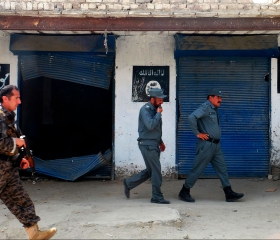
Grigory Lukyanov:
The Islamic State in Afghanistan: a Real Threat to
the Region?
On the whole, it should be noted that extremist sentiments have never been widespread in Turkmenistan. However, the situation has begun to change radically over the last year or two as a result of the destabilization in neighbouring Afghanistan. It is precisely on the border between Turkmenistan and Afghanistan that ISIS is most active in its efforts to penetrate into Northern Afghanistan. It should be noted, however, that we are only talking about a “game of flags” right now: certain groups of Afghan Turkmens living on the border raise the ISIS flag in exchange for money from the Middle East, but they do not take orders directly from the “Caliph.” Nonetheless, there is no denying that invasions are possible.
The key problems that could provoke instability and the growth of religious extremism include, in addition to the factors already listed, the economic and debt crises. Since the construction of Chinese pipelines through Turkmenistan is set up as a loan and not an investment, Turkmenistan is currently facing a debt crisis. That, in turn, leads to social problems. In addition, inter-tribal relations have deteriorated somewhat because, unlike the late Turkmenbashi, President Berdimuhamedow favours the Ahal Tekke in everything. Hence the growing discontent among other tribes, not only among Yomut, who are traditionally hostile to the Tekke, but also among other groups (including the related Tekke tribe from Mary, whose business has recently been subjected to severe restrictions).
Turkmenistan: Scenarios for an Uncertain Future
Turkmenistan faces the problem of a sharp increase in religious extremism today.
The situation in Turkmenistan is currently characterized by an extremely high level of uncertainty and risk. Under such conditions (called the “system bifurcation point”), a rather large number of options for an alternative future is generally possible. Security will play a major role in the country’s evolution. The most unfavourable scenarios could lead to the collapse of statehood, inter-tribal war and the overall “Afghanization” of the country. Favourable scenarios could lead to the long-suffering people of Turkmenistan finally being able to take advantage of their oil and gas wealth and receive decent education and healthcare systems (similar to what happened in Persian Gulf countries, and also in Libya prior to the civil war). However, as a rule, the extreme scenarios are the least likely. Thus, in the long term, a “no change” scenario is most likely, in which the current status-quo will be maintained, with certain fluctuations in either direction.
“No Change” Scenario
Turkmenistan is experiencing difficulties in ensuring the country’s defense capabilities.
Demographic indicators do not change massively, so they are generally easier to predict than forecasts based on other indicators. Given the low median age of the Turkmen population, we can predict that population growth in the country will continue for at least another 20 to 40 years, i.e. until 2050, although it will gradually slow down. The population’s young age structure will automatically produce a relatively high birth rate.
Turkmenistan is a country with abundant labour resources. This will inevitably continue in the future. The situation is characterized by a very high level of hidden unemployment, particularly in rural areas. Young people who have been squeezed out of the agricultural sector are unable to find work in the cities, which creates fertile ground for criminalization, social marginalization, drug abuse and potentially Islamist extremism.
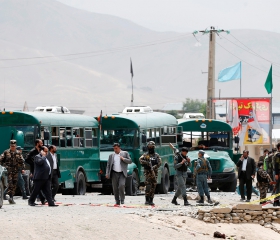
Talatbek Masadykov:
The Negative Processes in Afghanistan Could
Destabilize Central Asia
The low level of education among the population and the high risks inherent in the Central Asia region make it impossible to forecast any major shifts in the structure of the economy, despite the pursuit of an industrialization policy that has produced certain results in hydrocarbon processing, as well as in the chemical and textile industries, but has not fundamentally changed the economic picture. The country’s economy remains dependent on global gas prices, and the prosperity of the majority of the population is tied to the situation in agriculture, both in terms of the rural population’s income, as well as the accessibility of food products for citizens.
The relatively high GDP per capita, as well as the fact that Turkmen citizens do not generally leave the country for seasonal work to earn money, which is seen in neighbouring Tajikistan, Kyrgyzstan and Uzbekistan, is not conducive to a major migration outflow. The existing migration patterns, where internal migration is dominant, will more than likely continue. Russia will probably remain the primary destination for external labour migration and shuttle trade, although the level is rather low (compared with other Central Asian countries). External migration flows will be distributed between Russia, Turkey, Iran, the Persian Gulf countries and perhaps China, South Korea and the European Union.
Growth in the country’s population will continue for a minimum of 20–40 years.
The evolution of the identity of the majority of the population is also a phenomenon that changes little, and is determined by long-term trends. In this regard, Turkmenistan will most likely remain “a nation of tribes” in the long term, i.e. people will identify themselves more as Akhal Teke, Mary Teke, Yomut, Ersari, Goklen, etc., and not as Turkmens. However, in the long run, this does not automatically mean that there will be an increase in tribal conflicts or, moreover, that the country will disintegrate. Strife among tribes will be determined by the overall security situation in the region and the country as a whole.
The evolution of the identity of the majority of the population is also a phenomenon that changes little and is determined by long-term trends.
As regards the “no change” scenario in the evolution of foreign policy, a certain tradition combining a multi-vector nature and isolationism has already been established. Turkmenistan tries to minimize contact with other external players (with the exception of the purely economic sphere), while diversifying contacts as much as possible. This provides maximum economic profit and dividends from the standpoint of preserving the existing political regime. Thus, Ashgabat will try to continue this policy for as long as possible.
The key interest for Turkmenistan is the construction of new gas pipelines. In its previous stage of development, the country was able to overcome its trade and transit dependence on Russia. Unfortunately, this “overcoming” took the form of an almost complete cessation in gas trade with Gazprom. As a result, Turkmenistan now depends on gas supplies to China, which are not under particularly favourable price conditions. Iran also purchases small amounts of gas.
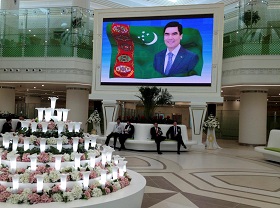
Terminal of the newly built airport
with a screen showing a portrait of Turkmen
President Kurbanguly Berdymukhamedov
during its official opening in Ashgabat,
Turkmenistan, September
17, 2016
Thus, Turkmenistan will seek to build new gas pipelines. Key among them are the Trans-Caspian Gas Pipeline to the European Union and the Turkmenistan–Afghanistan–Pakistan–India Pipeline (TAPI) to India (through Afghanistan and Pakistan). However, instability in Afghanistan poses an obstacle to the construction of TAPI. Unfortunately, such instability is long-term in nature, and it will therefore be impossible to build the TAPI pipeline within the framework of the “no change” scenario. The Trans-Caspian Gas Pipeline has met serious objections from Russia and Iran, and along with the unresolved status of the Caspian Sea, which Iran – Turkmenistan’s neighbour and a competitor in gas sales to Europe – can always use to block the project. Thus, the likelihood of the Trans-Caspian Gas Pipeline being built under the “no change” forecast is not very high, either. There is a somewhat higher probability that China will expand its gas purchases, and Russia will resume gas transit, or that Iran will increase gas purchases to supply its northern provinces and free up gas for export to the European Union.
We can expect the Islamic religious revival to continue, even under the “no change” scenario. Unfortunately, this will be accompanied by the increased threat of religious extremism and terrorism. The latter will have negative interplay with the instability in neighbouring Afghanistan as well as with the prospect of the Middle Eastern conflict expanding into Central Asia and Afghanistan (including through mechanisms to recruit international terrorists and militants, Islamic State infiltrating Afghanistan and Central Asia, and the inflow of funds from the Middle East to support extremist and terrorist groups). However, under the “no change” scenario, the Turkmen authorities will manage to keep these processes under a certain level of control, which will help to preserve neutrality, meaning that they will not have to resort to foreign military aid.
In the “no change” scenario, the Turkmen authorities will manage to keep these processes under a certain level of control, which will help to preserve neutrality, meaning that they will not have to resort to foreign military aid.
The worst-case scenario involves an excessively sharp increase in pressure on the international situation due to the decrease in hydrocarbon prices and the subsequent economic crisis, as well as to the situation in Afghanistan and the Middle East. The combination of unfavourable external factors and economic crisis could create the conditions for further growth in inter-tribal conflicts. In this situation, particularly in the event of major incursions from Afghanistan (including by the Turkmen tribes living there) it is even possible that the state could collapse. Since this would imply international terrorists making their way behind the lines of the Collective Security Treaty Organization (i.e. directly to Kazakhstan, which for now is located in the relative rear, far from the Afghan border), Russia and the CSTO would inevitably interfere. China would not leave its investments in the country unprotected, either. In this case, Turkmenistan may be forced to abandon its neutral status.
Turkmenistan tries to minimize contact with other external players and will try to continue this policy for as long as possible.
The best-case scenario involves mitigating regional risks in Central Asia, Afghanistan and the Middle East. This would create a favourable environment in which to reduce risks within Turkmenistan as well as the construction of the TAPI pipeline. This scenario would also entail deescalating the confrontation between Russia and the West, as well as the standoff between Iran and the West. This would create the right conditions to build the Trans-Caspian Gas Pipeline. In this case, Turkmenistan would be able to more fully take advantage of its gas resources. Much would then also depend on the ability of the authorities to properly manage cash proceeds from the sale of hydrocarbons, and use them to ensure the country’s prosperity and the well-being of the population. Under this scenario, Turkmenistan would realize the long-cherished dream of its people to transform itself into a post-Soviet Kuwait or Qatar – a dream that has existed since the country gained independence.
1. Kadyrov S. A “Nation” of Tribes. Ethnic Origins, Transformations and the Prospects of Statehood in Turkmenistan // Мoscow: Center for Civilizational and Regional Studies at the Institute for African Studies of the Russian Academy of Sciences, 2003; Kadyrov Sh. The Many-Faced Turkmençilik: Ethnographic Sketches, Concepts, and Terms // Мoscow: Institute for Oriental Studies of the Russian Academy of Sciences, 2010.
2. In the final years of the Soviet era, the ruling Tekke of Ahal introduced a Memorial Day commemorating the capture of Geok Tepe by General Skobelev, which was the key point in the Russian conquest of Turkmenistan. Great numbers of the Ahal Tekke tribe were killed. The introduction of the Memorial Day was both anti-Russian and anti-Yomut. The Ahal Tekke people believe that the Yomut tribe betrayed them at a key stage of the battle against General Skobelev by not coming to their aid. This is why there are reports that, fearing for their safety, the Yomud people today try to avoid visiting Ashgabat (in particular, there are very few Yomut among the labour migrants who come to the capital from Turkmenistan’s other regions), and as a child, the author of this article personally witnessed а brawl between Tekke students and Yomut.
3. Kleveman Lutz. The New Great Game: Blood and Oil in Central Asia // Grove Press, 2004.
4. On the other hand, at present, the official Turkmenistan’s interpretation of the official neutral status may prove an obstacle to helping the country fight the threat of international terrorism.
5. Speaking anonymously, many experts in Turkmenistan, including those working with the national statistics system, state that data on the country is unreliable at best, or deliberately falsified at worst. See also: Kadyrov S. The Secrets of Turkmenistan’s Demographics: Problems, Gaps, Falsifications // Moscow: Institute of Oriental Studies of the Russian Academy of Sciences, 2009.
6. Berdimuhamedow’s education and employment makes him a member of the national intelligentsia; he is a dentist by training.
(no votes) |
(0 votes) |


